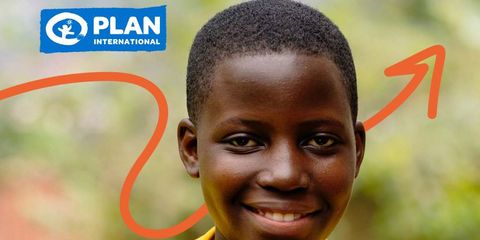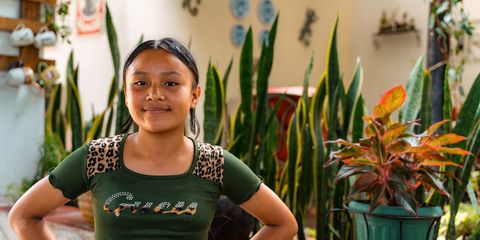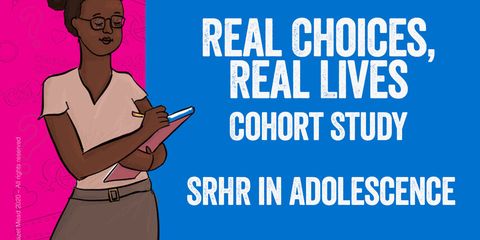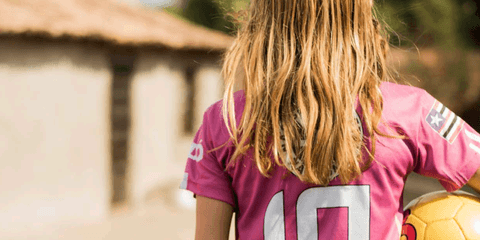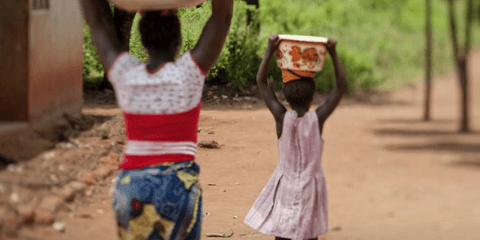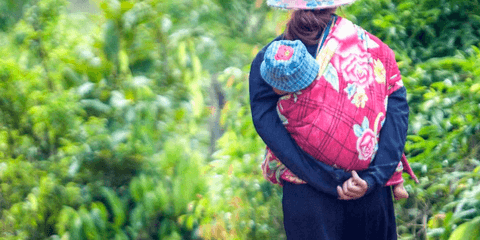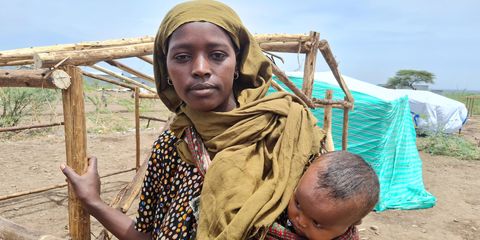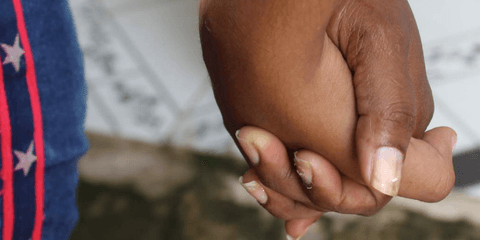Real Choices, Real Lives
Real Choices, Real Lives is a Plan International research study that has been following the lives of over 100 girls in 9 countries around the world from their birth in 2006 and will end when the girls turn 18 in 2024.
As a longitudinal and qualitative study, Real Choices, Real Lives gives us rare access to girls’ daily realities, opportunities, and challenges; their experiences of gender and social norms over the course of their childhood and adolescence; their opinions; and their aspirations for the future in their own words.
Real Choices, Real Lives has a distinct commitment to understanding the root causes of gender inequality by asking questions about beliefs, values, and expectations which aim to uncover how gendered social norms and behaviours are created and sustained or shift over time.
This evidence is used to support Plan International’s policy, advocacy and programming work around the world: by hearing from girls directly, we ensure that their experiences, ideas, and recommendations for change inform and shape our work.
Find out more or go straight to the reports
About Real Choices, Real Lives
Real Choices, Real Lives is following the lives of over 100 girls and their families in Benin, Brazil, Cambodia, Dominican Republic, El Salvador, Philippines, Togo, Uganda and Vietnam. The study began with 146 girls at the time of their birth in 2006 and will continue until they turn 18 in 2024.
Through annual in-depth interviews with the girls and their caregivers, the study explores the girls’ daily realities, attitudes and aspirations for the future. The study has explored different aspects of the girls’ lives, including their time use, education, sexual and reproductive health and rights (SRHR), and how they navigate gender rules.
A qualitative, longitudinal study of this kind is rare. By following the same cohort of girls over the course of their childhood and adolescence we are able to explore how their experiences have changed over time. Real Choices, Real Lives has a distinct commitment to understanding the root causes of gender inequality, and to exploring how girls’ attitudes and behaviours are influenced by their families and communities at different stages of their development.
We are also able to explore the girls’ experiences in a much greater depth than larger quantitative studies can – by speaking to girls directly, we are able to give voice to the insights and reflections of girls from different contexts around the world.
“It’s good to be heard. To know people care about girls.”
Bianca, 17, Brazil, 2023
About the cohort girls (click to expand)
In Africa, the cohort girls come from Benin, Togo and Uganda; in Asia from Cambodia, Philippines and Vietnam; and in Latin America from Brazil, Dominican Republic and El Salvador. Across all countries, the girls were chosen sampled based on the year of their birth (2006) and on their household context: all of the girls come from the lowest income households in each of their country contexts.
Over the years, a number of the girls have left the study for various reasons – including migration and death – and others we have unfortunately lost contact with over the years.
In 2024, the girls remaining in the study are 17 years old. A number have married – or are in unions – and some are now mothers themselves. Most of the girls are still in education and have a range of aspirations and dreams for the future: many wish to be leaders in their communities – including as doctors or teachers, and to have families of their own. They have powerful recommendations and demands for change on issues impacting their lives including gender inequalities, climate action, and access to SRHR information.
“In the future I would like to be a teacher so that I can teach reading and writing to children in my community.”
Tene, 15, Togo, 2021
Our findings
Despite growing up in very different contexts, the cohort girls shared many common experiences during childhood and early adolescence (10-14) including changing social expectations of their behaviour as they get older that are often dramatically different to expectations of their male peers.
“My parents prefer the boys to concentrate on field work and the girls on household tasks. I don’t find this fair.”
Essohana, 11, Togo, 2017
As girls enter adolescence, their attitudes and opportunities are shaped by key family relationships. Caregivers’ concerns about girls’ safety, reputation, and future prospects strongly impact how girls are raised and the freedoms they have. Caregiver-adolescent dialogue is an essential factor in girls’ experiences of sexual and reproductive health and wellbeing, and is heavily influenced by social norms.
“I’d like more information on sexuality, it would help me when I start to go out with boys. I would know how to avoid pregnancy and sexually transmitted diseases.”
Thea, 15, Benin, 2021
Girls and their families in nearly all the cohort countries have experienced some level of food insecurity between 2020 and 2022 with the impacts of the COVID-19 pandemic, extreme weather and global increases in food and fuel costs all contributing to hunger. Climate change has also had an impact on the girls’ education – as well as causing damage to school buildings, loss of livelihoods causes families to be unable to afford the cost of fees and school supplies, forcing girls to drop out of school or miss extended periods.
“The changing weather affects my studies. It’s always raining… we missed a lot of lessons.”
Darna, 17, Philippines, 2023
Girls’ attitudes towards social norms and gendered expectations often shift as they get older. Some girls become more acceptant of restrictions placed on them, while others start to question, challenge or resist them. All the cohort girls have challenged gender norms in at least one area of their lives. Girls’ resistance to inequality is not always visible, however, many girls find ways to negotiate restrictive gender norms.
“[My friends] make fun of me, they say I’m a tomboy, that I’m always playing ball all the time with boys… then I tell them that this is sexist because a girl can play ball just like a boy.”
Juliana, 13, Brazil, 2019
Using evidence for impact
Real Choices, Real Lives evidence has been used to inform Plan International’s policy, advocacy and programming work over the years. Two examples include:
- In 2023, Real Choices, Real Lives findings on the impact of climate change on girls’ education was used to inform Plan International’s engagement at COP28. By hearing from girls directly, we learned their ideas and recommendations for mitigation and adaptation and were able to ensure that action is informed by the needs and voices of those most impacted by the climate crisis.
- Evidence collected by Real Choices, Real Lives in 2021 revealed that the cohort girls were keen to receive more information about their bodies, sexual health and wellbeing, and healthy relationships from their caregivers – but their caregivers were unsure how to initiate this dialogue. In Benin, Plan International used this evidence and partnered with local youth to co-produce radio shows about SRHR issues to encourage healthy dialogues between adolescents and their caregivers.
“I now have a better understanding of hygiene during menstruation.”
Participant in the radio show project in Benin, aged 14, 2023
Learn more about how Plan International uses evidence for impact.
Methodology
Real Choices, Real Lives is grounded in feminist research principles and has developed a strong participatory approach – meaning that girls’ recommendations for change and justice are centred and amplified in not only the work of the study, but the work of Plan International more broadly.
The study conducts data collection rounds annually. As a qualitative study, key methods include in-depth semi-structured interviews with girls and their caregivers. The format of these interviews has evolved over time to ensure they are age appropriate: these have included games and drawing. We also conduct annual household surveys which allows us to understand changes in household composition and circumstances over time.
The flexibility inherent in the qualitative approach means that the study is able to explore new lines of enquiry in each round of data collection reflecting and building on issues present in girls’ lives as they grow up and encounter new experiences, challenges, and influences of gendered social norms.
Plan International receives external ethical approval for the Real Choices, Real Lives research study from a certified IRB, and from national ethics boards in relevant focal countries. All research activities for the study are undertaken in line with Plan International’s ethics, safeguarding and data privacy policies and procedures. Principles of confidentiality, anonymity, beneficence, justice and informed consent are always applied, with parents/guardians asked for consent on an annual basis and girls asked to give their assent. All of the cohort girls’ identities are anonymised – the girls are all assigned a pseudonym, and information about their location is removed from the dataset.
As well as keeping to normative ethical commitments, Real Choices, Real Lives ensures that the research is informed by a feminist praxis that prioritises care and sensitivity to the cohort girls and their families.
“I am happy with this study because I have an opportunity to speak what I have never said before.”
Kannitha, 17, Cambodia, 2023
For more information about the Real Choices, Real Lives study methodology, please see this brief:
Collaboration
Real Choices, Real Lives is a unique dataset of girls’ experiences, attitudes, and daily realities – as told in their own words over 18 years. With rich insight into the lives of girls around the world, this evidence has enormous value across multiple areas – including in policy, advocacy, programmes, and academic research. Examples include:
- In 2021, Plan International collaborated with Cardiff University on an International Feminist Journal of Politics article using evidence from Real Choices, Real Lives to explore girls’ everyday acts of resistance.
- Findings from Real Choices, Real Lives data collection in revealed that the cohort girls were keen to receive more information about SRHR topics from their caregivers. Partnering with Cardiff University and Plan International Benin, in 2023 Real Choices, Real Lives piloted a project for using evidence from the study to inform radio shows that promote healthy intergenerational dialogues between adolescents and their caregivers on sexual health and wellbeing.
If you would like to collaborate with Plan International on the Real Choices, Real Lives evidence, please contact research@plan-international.org.

